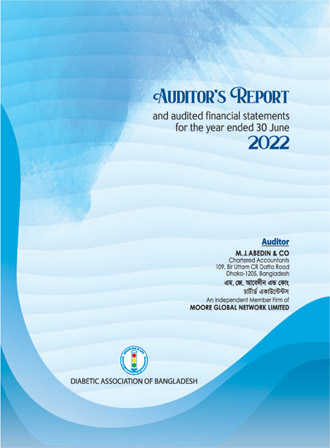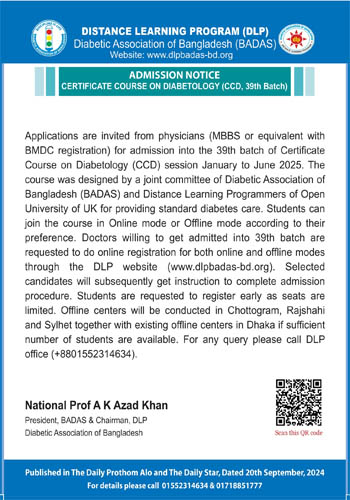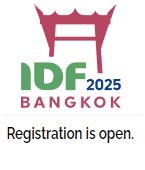DAB: the beginning of a journey, which goes on
Dr Mohammed Ibrahim first thought of diabetic care in the country. He realized that diabetes is such a disease where not only doctors but patients should be involved in the process of diabetic care. He thought the matter as a socio-medical care. Although the real extent of the problem of diabetes in the country was not evident, he could foresee the present picture at that time and organized a group of social workers, philanthropists and professionals. With the help of them he established Diabetic Association of Bangladesh (then Pakistan) on February 28, 1956. Primarily an adhoc committee was formed to run the organization. Later, on May 21, 1956 the first Office Bearers of the Association has been formed with the following members:
Major Dabiruddin – President
Dr Md Ibrahim – Vice President
Mrs Nurjahan Morshed – Vice President
Mr A M Salimullah Fahami – Secretary
Miss Tahera Karim – Joint Secretary
Dr M A Mannan – Joint Secretary
Mrs F Dosani – Treasurer
DAB: Started as OPD
Diabetic care was started in a tin-shed building at Segun Bagicha. The motto of Dr Ibrahim was `no diabetic patients should die untreated, unfed or unemployed even if she/he is poor'. So, he committed to give primary care to the diabetic patients free of cost irrespective of socio-economic, racial or religious status. Even rich patients were not allowed to buy the primary diabetic care, but they could donate money to the association. The resources and fund was raised through motivation programs.
It is to be noted that, there were no indoor facilities initially at Segun Bagicha. Patients in need of hospitalization were sent to other hospitals. In the beginning of 70's few short-stay beds were established to take care of the serious patients.
Dr M Ibrahim was very much aware about the quality of the service provided to the patients. He used to address the patients by saying that `we are grateful to you for giving us the opportunity to serve'. He also motivated other doctors to serve the patients with empathy. He included social welfare, health education, nutritional education and rehabilitation in the diabetes healthcare delivery system.




